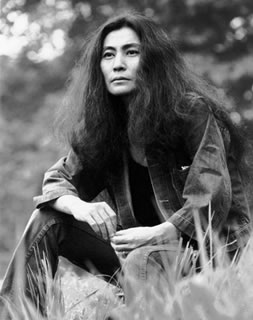
I once wrote that Yoko Ono (born February 18, 1933) made more great albums than any solo Beatle, but also more bad albums. Of course, perspectives on Ono's music vary wildly, and the albums I think are great are the ones the mainstream rejected most vigorously. It's when she makes the most concessions to pop norms (whether rock or dance/electronic) and her lyrics get sappy that I don't like her work. But certainly anyone starting to explore her music could use some guidance.
There are plenty of places to read about her life, so I won't review that info, especially as I touched on some of it in my recent interview. But a few points are worth making, over and over, to counter clichés and misconceptions that have thrived for decades. Ms. Ono was a respected artist for years before she and John Lennon met near the end of 1966. And she didn't break up the Beatles, they broke themselves up (as Paul McCartney himself has stated).
Here I would rather talk about her music. Looking at some of the reviews of her albums and comparing them to what is actually heard is a painfully instructive lesson in how some critics hear what they expect to hear, even if they are not necessarily opposed to her work. Even rock critics who write favorably of her are generally ignorant of the traditional Japanese music that strongly influences her singing style, and are not sufficiently used to listening to avant-garde music to know how to react to what she's doing and properly contextualize it. Her vocal technique is actually masterful, not at all random, and full of subtleties.
This sort of Top Ten is in chronological order, which makes it easier to follow her musical evolution. Then, after that album-by-album survey, a quick summary to guide neophytes. It's unfortunate that all of Ryko's reissues of her '70s albums are currently out of print; here's hoping that a new series will replace them as part of the celebration of her 80th birthday.
 Live Peace in Toronto 1969 (Apple/Capitol, 1969)
Live Peace in Toronto 1969 (Apple/Capitol, 1969)
All of side two is devoted to Yoko fronting a Plastic Ono Band put together for this festival appearance (their only rehearsal coming on the plane to the gig): her, guitarists John Lennon and Eric Clapton, bassist Klaus Voormann, and drummer Alan White. After a relatively concise "Don't Worry Kyoko (Mummy's Only Looking for Her Hand in the Snow)," about her battle for custody of her daughter from her second marriage (to Anthony Cox), we get the real deal avant-gardist "John John (Let's Hope for Peace)," where her wails compete with Lennon's and Clapton's feedback in a 12-minute cathartic outburst that debuted Ono's trademark vocal sound.
 Plastic Ono Band (Rykodisc [originally Apple/Capitol], 1970)
Plastic Ono Band (Rykodisc [originally Apple/Capitol], 1970)
Here the Plastic Ono Band is Ono, Lennon, Voormann, and Ringo Starr; one track, "AOS," from 1968, instead has avant-garde jazzmen Ornette Coleman (trumpet), Ed Blackwell (drums), and bassists David Izenzon and Charlie Haden. Though "AOS" is the standout, because the accompanying musicians are best matched to her creative ethose, the other tracks also present Ono's strong vision of improvisation; supposedly they were all cut in one session. People thought Lennon's Plastic Ono Band album (recorded in the same period with the same musicians) was raw, but Ono's was rawer. Lennon's guitar work on the opener "Why" is one of the best things he ever did. The rock-band tracks chug along in a fairly simple way, but its sheer guilelessness and rhythmic impetus distinguished it from pretty much everything else going on in rock at the time even before considering Ono's vocals on top of it.
 Fly (Rykodisc [orig. Apple/Capitol], 1971)
Fly (Rykodisc [orig. Apple/Capitol], 1971)
At the time, this was the ultimate avant-garde mindfuck for rock fans.Sure, most of the tracks on the first half are pretty much rock, but even on them her innovative singing style very much sets the music apart from the mainstream (although "Mrs. Lennon" is melodic, and hauntingly beautiful). On the other hand, everything on the second disc is much more freeform, such as "Airmale," which sounds like complete free improvisation. It's also been said that some tracks here (notably the nearly 17-minute "Mindtrain") invented Krautrock with its "motorik" pulse and long-building tension (although, really, Pink Floyd had already invented it), but even when mostly on her own, as on the nearly 23-minute title track (soundtrack to her film of the same name), nearly all of the fourth side of the original double LP, what she created was riveting -- for open-minded listeners.
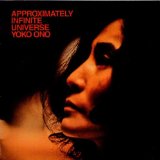 Approximately Infinite Universe (Rykodisc [orig. Apple/Capitol], 1973)
Approximately Infinite Universe (Rykodisc [orig. Apple/Capitol], 1973)
Another double LP, though cutting half the tracks would make it better. Ono was moving into shorter, more song-like tracks, and the results were rather erratic in quality. The best tracks though, such as "Yang Yang," "Death of Samantha" and "I Felt Like Smashing My Face in a Clear Glass Window," still sound good, and the sheer weirdness of studio funk topped by her avant-vocal techniques on a track such as "What Did I Do!" is endearingly mind-boggling.
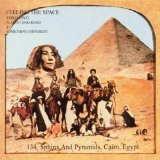 Feeling the Space (Rykodisc [orig. Apple/Capitol], 1973)
Feeling the Space (Rykodisc [orig. Apple/Capitol], 1973)
At the time, this was Ono's most mainstream album yet, not only in the accompaniment but even in her singing style, yet I like it anyway. The lyrics are especially focused on feminist concerns and have a certain grittiness to them. Lennon is present on only one song (they were separated at this time), but Ono was working with top New York session musicians (guitarist David Spinozza, saxophonist Michael Brecker, etc) who, while often smooth, add enough grease to usually keep from slipping into blandness. Also, though the first two tracks are very mellow, more and more muscle and imagination surface as the album goes on, including soul backing vocals on five tracks, culminating in the penultimate "Woman Power," definitely the hard-hitting highlight. Even the deliberately musically corny closer "Men, Men, Men" is that way ironically, with a scathingly sarcastic lyric.
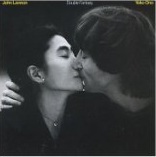 Double Fantasy (Geffen, 1980)
Double Fantasy (Geffen, 1980)
It's true that this Top Ten might look like it has eleven entries, but I'm counting Ms. Ono's halves of this and Live Peace as one combined album. Double Fantasy is the latter's opposite in a couple of key ways: Yoko and John alternate tracks, and Yoko sticks to structured songs. Not that there aren't avant-garde touches, such as her lengthy simulated orgasm at the end of "Kiss Kiss Kiss," the second track on the LP, right on the heels of its first hit single, Lennon's "(Just Like) Starting Over."
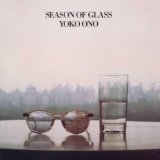 Season of Glass (Geffen, 1981)
Season of Glass (Geffen, 1981)
Since on CD this includes arguably her greatest song, "Walking on Thin Ice," as a bonus track, it's probably her best song-oriented album. And if that's not her greatest song, then the stunning "I Don't Know Why" must be, for its cathartic exploration of what one feels after watching one's husband gunned down. This album is kind of a mixed bag, including some old songs, but even though many of the tracks are pretty slick, in context, songs such as "Goodbye Sadness" and "Nobody Sees Me Like You Do" communicate an undercurrent of pain. After this, though, she retreated from the edge for a long time.
 Rising (Capitol, 1995)
Rising (Capitol, 1995)
Accompanied by alternately punky and funky trio IMA, including son Sean, this was Ono's return to the edge after a series of boring albums bracketing a long layoff. Though she would get even better on subsequent records, this was a revelation at the time: fans of the avant Yoko could hear that she could still rock, and still stun with the power of her voice. Instead of trying to infiltrate the mainstream, she could work with new generations of musicians more aligned with her avant-garde roots.
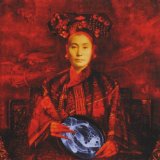 Blueprint for a Sunrise (Capitol, 2001)
Blueprint for a Sunrise (Capitol, 2001)
Here, IMA was joined by some additional musicians, including downtown NYC avant-gardists Zeena Parkins (electric harp) and Eric Sanko (bass), and brought back her old avant-vocal style a bit more. Not a great album, but it has its moments, and as on its predecessor, at least she sounded like she was working with sympathetic musicians and was again making use of her most striking talents.
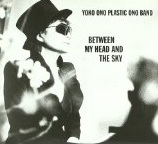 Between My Head and the Sky (Chimera, 2009)
Between My Head and the Sky (Chimera, 2009)
Ono's vocal style fits right into the jagged, post-punky music son Sean and friends create on a third of the tracks; finally there was a pool of rock musicians who'd grown up listening to her early work or the stuff that grew out of it, and could thus relate to her style naturally. Though a less obvious fit, the quieter, less abrasive ambient jazz/electronic accompaniments that dominate the second half give her idealistic lyrics room to breathe even while contributing a little edginess, most notably on the masterpiece "Feel the Sand."
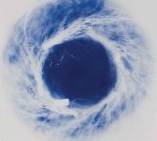 YOKOKIMTHURSTON (Chimera, 2012)
YOKOKIMTHURSTON (Chimera, 2012)
Her collaboration with ex-Sonic Youth members Kim Gordon and Thurston Moore is a perfect musical match, the first time she'd worked with front-tier avant-gardists since her 1968 recording with Ornette Coleman on "AOS."
And now, the quick summary/ranking.
